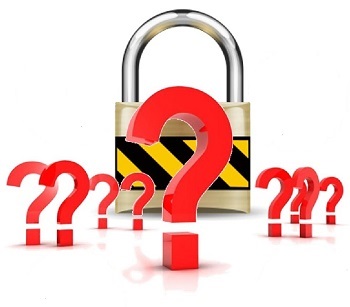The retailer has decided to take its own direction instead of choosing to accept payments through Apple Pay.
Neiman Marcus, the luxury retailer, has now joined forces with Capital One in order to create its own mobile wallet so that its credit card customers will be able to use an app on their smartphones in order to pay for purchases while in store.
At first, the mobile app will be available only as an iOS application, so it will be for iPhone users.
This mobile wallet app will integrate with a number of different credit cards, including the Neiman Marcus card, in addition to Bergdorf Goodman, American Express, MasterCard, Visa, and Discover. Similar to Apple Pay, it will make it possible for customers to be able to buy items, in-store, without having to use their actual plastic credit cards. At the moment, the app won’t support the use of gift cards.
This helps to explain why Neiman Marcus chose not to sign on with the Apple Pay mobile wallet.
 It is clear that the retailer preferred to create its own competing mobile payments platform. That said, what is quite interesting about this application, and what makes it very different from Apple Pay is that it is compatible with more versions of the smartphone. At the moment, Apple Pay can be used only with the iPhone 6 and the iPhone 6 Plus. However, the mobile payments wallet from Neiman Marcus will be available to users of several different versions of that iOS based smartphone.
It is clear that the retailer preferred to create its own competing mobile payments platform. That said, what is quite interesting about this application, and what makes it very different from Apple Pay is that it is compatible with more versions of the smartphone. At the moment, Apple Pay can be used only with the iPhone 6 and the iPhone 6 Plus. However, the mobile payments wallet from Neiman Marcus will be available to users of several different versions of that iOS based smartphone.
While Apple Pay may be the most well recognized and visible smartphone wallet, there isn’t a single app in this space that has reached the point that it can say that it can block out most other competing applications that are hoping to make their way into this space.
Neiman Marcus isn’t the only one to choose not to sign on with Apple and that has decided to create its own mobile wallet. Starbucks – the company that is typically considered to be the most successful mobile payments venture in the United States – has also done so, as have Walmart, Exxon Mobil, 7-Eleven, and Southwest Airlines.
Among the primary barriers to paying via smartphone has been a concern that it is not secure.
Although mobile payments are becoming increasingly popular among smartphone and tablet users, they are still not increasing in use at the rate that many in the industry had predicted, despite its broad availability.
Among the main concerns that consumers have expressed is in the form of worries over its security.
That said, Zapp, a mobile payments provider, has now released a report that says that using smartphones to complete purchase transactions is actually safer than buying something over an e-commerce website. Within the report, the company explained that people using this type of service can better “…carry out secure transactions…” than would be possible if they were shopping at the typical online commerce website.
Zapp feels that mobile payments can allow a consumer to shop with the same security as they would with other transactions.
 According to David Emsworth, a spokesperson for Zapp, the smartphone based payments ecosystem is undergoing an evolution that should make it possible for a consumer to use a mobile wallet with the same confidence in its safety and security as they would have when using any other transaction platform.
According to David Emsworth, a spokesperson for Zapp, the smartphone based payments ecosystem is undergoing an evolution that should make it possible for a consumer to use a mobile wallet with the same confidence in its safety and security as they would have when using any other transaction platform.
That said, Emsworth does admit that among the reasons that mobile wallets have not yet faced the types of usage popularity that would draw as much attention to them from hackers as has been created by credit cards. As there aren’t that many users, there aren’t as many criminals out there who are targeting the method.
Potential thieves aren’t yet spending the type of time and effort on cracking mobile wallet systems and platforms as they are on systems that have a considerably larger usage base. That said, as this type of transaction becomes increasingly mainstream, it is unavoidable that those thieves will start to place more of a focus on those smartphone based platforms.
Therefore, while Zapp may be right in saying that mobile payments are currently actually a safer method of shopping than submitting a credit card number into an e-commerce checkout system, it is unknown as to whether or not that will remain the case as consumers start to use these digital wallets on a larger scale.
 It is clear that the retailer preferred to create its own competing mobile payments platform. That said, what is quite interesting about this application, and what makes it very different from Apple Pay is that it is compatible with more versions of the smartphone. At the moment, Apple Pay can be used only with the iPhone 6 and the iPhone 6 Plus. However, the mobile payments wallet from Neiman Marcus will be available to users of several different versions of that iOS based smartphone.
It is clear that the retailer preferred to create its own competing mobile payments platform. That said, what is quite interesting about this application, and what makes it very different from Apple Pay is that it is compatible with more versions of the smartphone. At the moment, Apple Pay can be used only with the iPhone 6 and the iPhone 6 Plus. However, the mobile payments wallet from Neiman Marcus will be available to users of several different versions of that iOS based smartphone.
 According to David Emsworth, a spokesperson for Zapp, the smartphone based payments ecosystem is undergoing an evolution that should make it possible for a consumer to use a mobile wallet with the same confidence in its safety and security as they would have when using any other transaction platform.
According to David Emsworth, a spokesperson for Zapp, the smartphone based payments ecosystem is undergoing an evolution that should make it possible for a consumer to use a mobile wallet with the same confidence in its safety and security as they would have when using any other transaction platform.